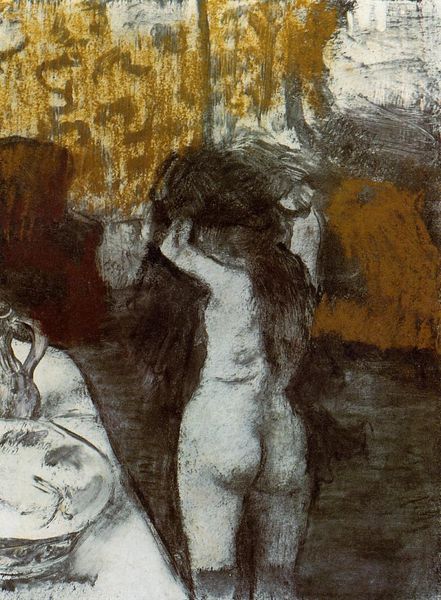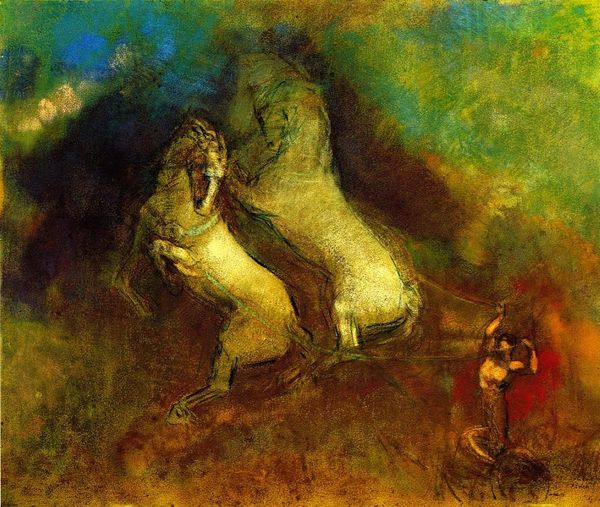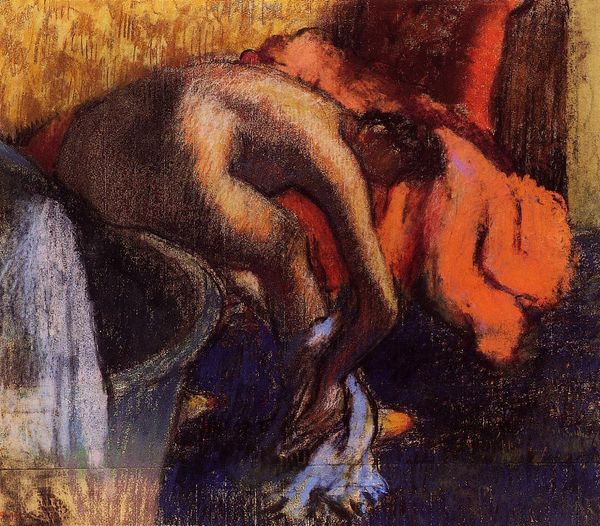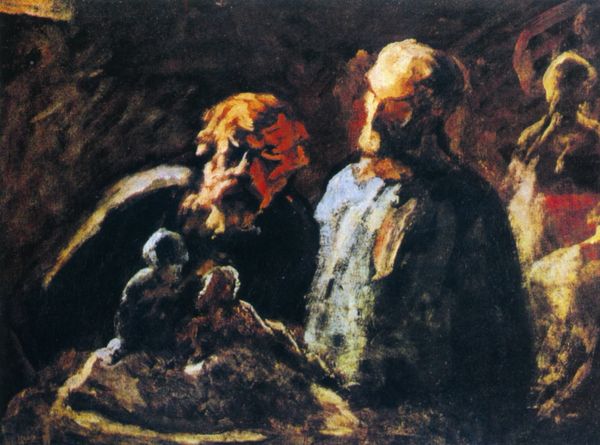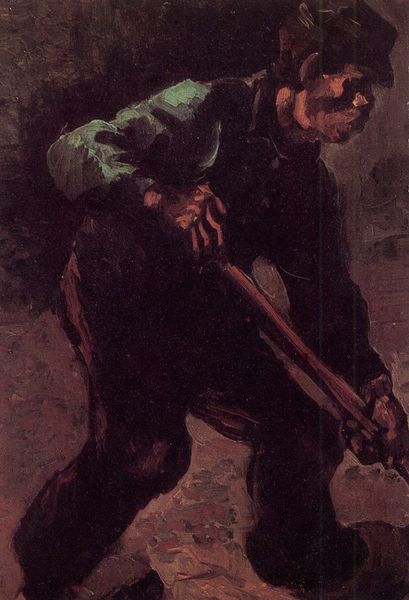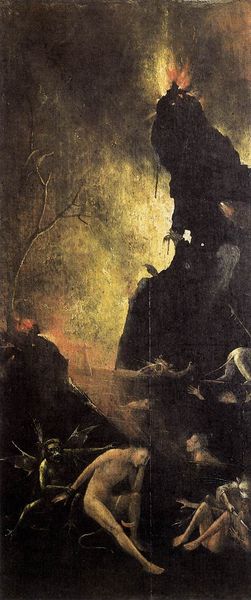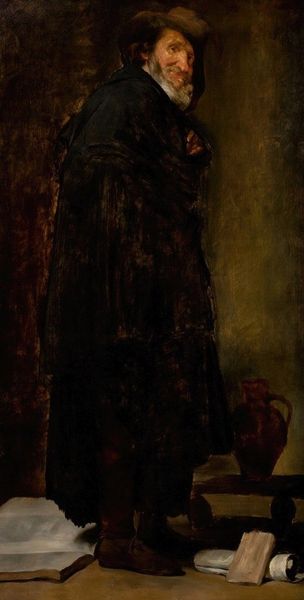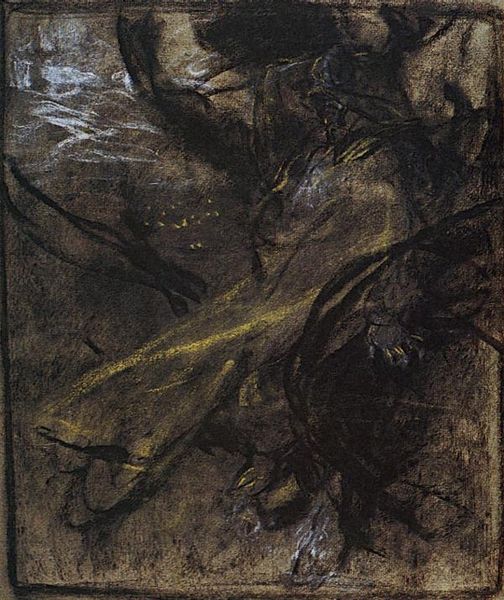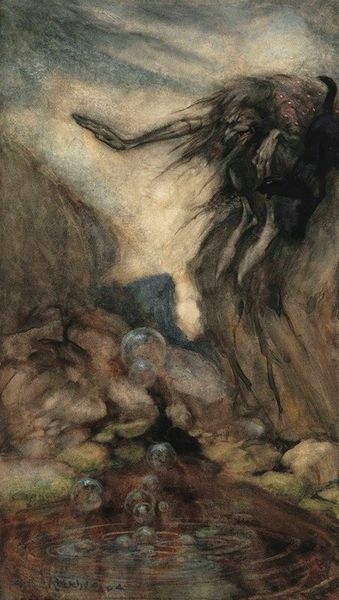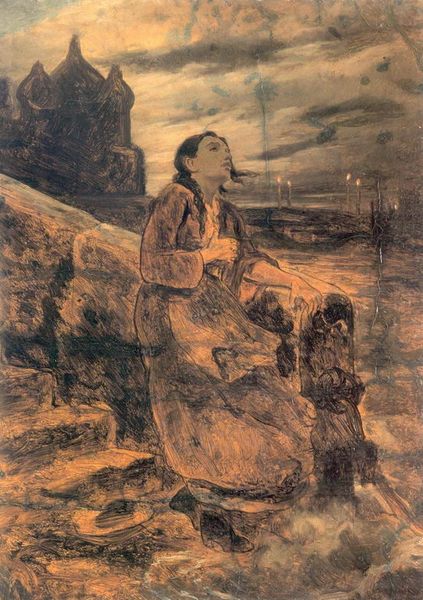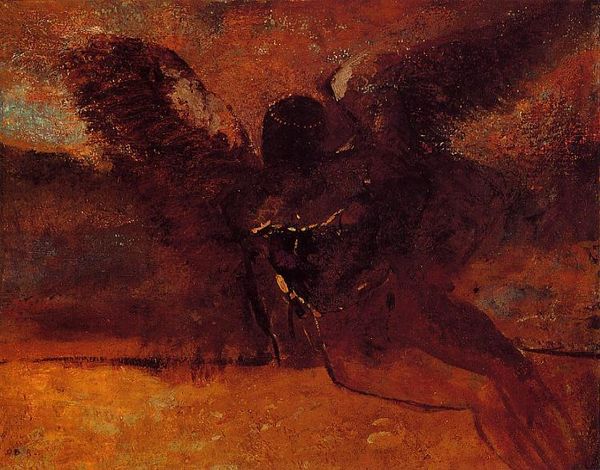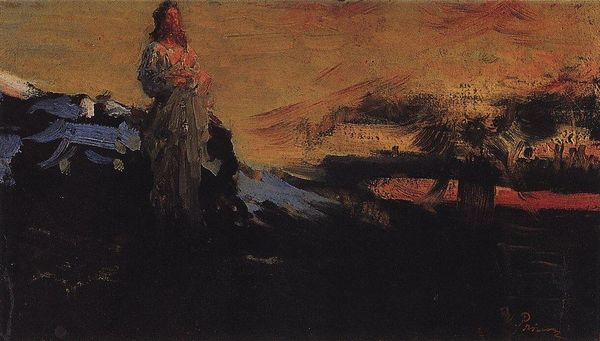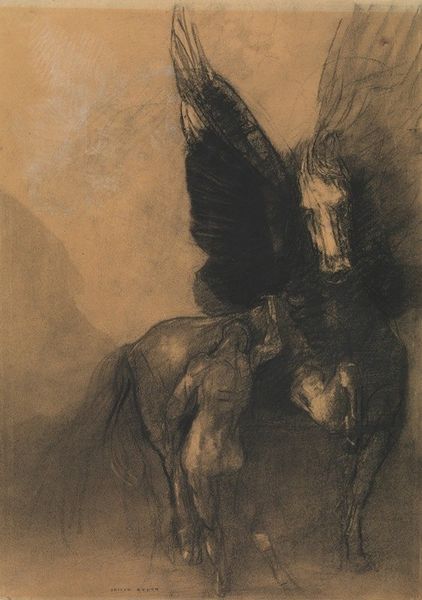
Copyright: Public domain
Editor: This is Albert Pinkham Ryder's "Perrette," painted around 1890, using oil on canvas. It's… rather dark, wouldn't you say? I am intrigued by the subject and how the landscape seems to merge with the figure. How do you interpret this work? Curator: Observe the interplay of light and shadow. Ryder's brushwork, though seemingly simple, establishes a compositional tension. Note the stark verticality of the figure against the ambiguous, almost amorphous, background forms. Does the woman appear grounded, or is she a phantasm within the earth-toned layers? The limited palette, dominated by umber and ochre, serves to flatten the pictorial space, challenging traditional perspective. Editor: It definitely feels like she’s emerging *from* the landscape. And her expression… vacant? What about the vessel on her head? It's like the painting has been simplified to these very primal forms. Curator: Precisely. Consider the vessel atop her head as a symbol—perhaps of labor, perhaps of bounty. Its geometric rigidity contrasts sharply with the woman’s flowing robes. It brings forward this idea that it’s the compositional juxtaposition rather than any anecdotal meaning that demands our consideration, would you agree? Editor: Absolutely, I see how you are putting these structural elements together and that formal reading reveals how powerful Ryder's approach is. Thanks for pointing this out. Curator: The pleasure is all mine. And perhaps we have collectively demonstrated the enduring vitality of Ryder's construction, wouldn't you say?
Comments
No comments
Be the first to comment and join the conversation on the ultimate creative platform.
